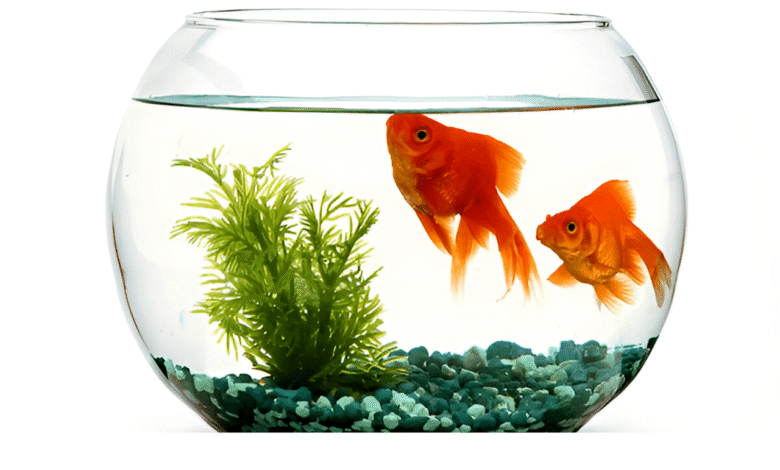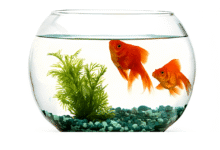
How to Clean a Fish Tank Without Harming Your Fish
Learn how to clean a fish tank without harming your fish using safe methods. Maintain water quality, remove algae, and preserve beneficial bacteria.
Cleaning a fish tank properly is crucial for maintaining a healthy environment for your aquatic pets. A well-maintained aquarium prevents harmful ammonia spikes, algae overgrowth, and stress that can weaken or even kill your fish. However, improper cleaning methods can disrupt the Fish Tank delicate ecosystem, making it just as dangerous as neglect. This will walk you through safe, step-by-step techniques to clean your fish tank effectively while keeping your fish stress-free and healthy.
Whether you’re a beginner or an experienced fish keeper, understanding the right way to perform water changes, filter maintenance, and algae removal is key to a thriving aquarium. By following best practices, you’ll ensure crystal-clear water, reduce disease risks, and create a balanced habitat where your fish can flourish. Let’s dive into the safest and most efficient ways to clean a fish tank without harming your fish.
How to Clean a Fish Tank Without Harming Your Fish
Gather the Right Cleaning Supplies
Before starting, ensure you have the necessary tools. Using the wrong supplies can introduce harmful chemicals or disrupt the Fish Tank nitrogen cycle. Essential items include a gravel vacuum, algae scraper, bucket (used only for aquarium cleaning), water conditioner, and a soft sponge. Avoid soaps or detergents, as even small residues can be toxic to fish. A gravel vacuum helps remove debris trapped in the substrate without disturbing beneficial bacteria. An algae scraper keeps glass clean without scratching it. Always use a dedicated bucket to prevent contamination from household cleaners.
Perform Partial Water Changes
One of the most critical steps in cleaning a Fish Tank is performing partial water changes. Removing 20-30% of the water weekly helps reduce nitrate buildup and keeps the environment stable. Sudden large water changes can shock fish, so consistency is key. Use a siphon or gravel vacuum to extract water while cleaning debris from the substrate. Always treat new water with a water conditioner to neutralize chlorine and chloramines before adding it back into the Fish Tank. Matching the temperature and pH of the new water to the tank prevents stress.
Remove Algae Safely
Algae growth is common but can become unsightly if left unchecked. Instead of harsh chemicals, use an algae scraper or magnetic cleaner for glass. For decorations, scrub them with a soft brush during water changes. Introducing algae-eating fish like plecos or snails can help control growth naturally. Reduce algae triggers by limiting light exposure to 8-10 hours daily and avoiding over feeding. If algae persist, test water parameters excess phosphates or nitrates may be the cause.
Clean the Filter Properly
The filter is the heart of your aquarium, housing beneficial bacteria that break down toxins. However, filters can get clogged with debris, reducing efficiency. Rinse filter media in tank water (not tap water) to preserve bacteria. Replace only one-third of the media at a time to avoid crashing the Nitrogen cycle. Avoid over-cleaning the filter doing it once a month is usually Real time. If using a sponge filter, gently squeeze it in removed tank water. For hang-on-back filters, check impellers for blockages to maintain proper flow.
Maintain Decorations and Substrate
Decorations and substrate can accumulate waste, leading to poor water quality. Gently stir the gravel during water changes to release trapped debris. For stubborn dirt, remove decorations and rinse them in dechlorinated water. Avoid using bleach unless absolutely necessary if you do, rinse thoroughly and soak in water conditioner. Live plants should be inspected for dead leaves, which can decay and increase ammonia levels. Trim overgrown plants to ensure proper water flow and light distribution.
Check Water Parameters Regularly
Even a visually clean tank can have imbalanced water chemistry. Use a test kit weekly to monitor ammonia, nitrite, nitrate, pH, and hardness. Sudden changes can indicate underlying issues like overfeeding or a failing filter. If ammonia or nitrite levels rise, increase water changes and check for dead fish or uneaten food. Stable parameters are crucial for preventing fish stress and disease.
Avoid Overcleaning
Reserve Beneficial Bacteria
Overcleaning destroys essential bacteria that break down toxins, risking ammonia spikes. Clean filters gently in tank water and never replace all media at once.
Skip Harsh Chemicals
Soap, bleach, and household cleaners are lethal to fish. Only use aquarium-safe tools and rinse decorations in dechlorinated water.
Moderate Your Routine
Deep clean substrate and decor monthly, not weekly. Focus on partial water changes and spot-cleaning to maintain balance without stress.
Challenges of Cleaning a Fish Tank Without Harming Your Fish
Maintaining Water Chemistry Balance
One of the biggest challenges is preserving stable water parameters during cleaning. Fish are extremely sensitive to sudden changes in pH, temperature, and hardness. When performing water changes, even slight differences between the new and old water can cause stress or shock to your aquatic pets. Many aquarists struggle to perfectly match the new water’s parameters to the tank’s existing conditions, particularly when dealing with tap water that may contain chlorine or chloramines.
Preserving Beneficial Bacteria Colonies
A major cleaning dilemma involves protecting the beneficial bacteria that are essential for breaking down fish waste. These bacteria colonies live primarily in your filter media, substrate, and decorations. Overzealous cleaning can accidentally wipe out these microorganisms, leading to dangerous ammonia spikes. Many fishkeepers face the difficult balance between keeping their tank clean and maintaining enough bacterial populations to process waste effectively.
Managing Stress During Cleaning
The actual cleaning process itself can be extremely stressful for fish. The disturbance of their environment, movement of decorations, and noise from equipment can trigger panic responses. Sensitive species may become prone to illness after cleaning due to stress-induced immune suppression. Fish often hide or show erratic swimming behavior when their territory is disrupted.
Dealing With Persistent Algae Problems
Algae control presents multiple cleaning challenges. While visible algae looks unsightly, completely eliminating it often requires methods that could harm fish. Many algae treatments contain chemicals that may be dangerous to certain species or invertebrates. Manual removal is time-consuming and can disturb the Fish Tankbalance if done too aggressively. The challenge intensifies when trying to address the root causes of algae (like excess nutrients or light) without making drastic changes that would affect fish health.
Cleaning Around Sensitive or Delicate Species
Certain fish and aquatic creatures present unique cleaning difficulties. Bottom-dwellers like Corydoras or loaches can be stressed by substrate vacuuming. Delicate species like discus or bettas may react poorly to any environmental changes. Invertebrates such as shrimp are extremely sensitive to water parameter fluctuations. Fish Tank with live plants add another layer of complexity, as root disturbance during cleaning can affect plant health which in turn impacts water quality.
Time Management and Consistency
Maintaining a regular cleaning schedule that keeps the tank healthy without over-cleaning requires significant time commitment and observation skills. Many aquarists struggle with finding the right frequency – cleaning too often stresses fish, while waiting too long allows harmful waste to accumulate. The challenge increases in heavily stocked tanks or those with messy eaters where water quality deteriorates faster. Keeping up with maintenance while avoiding cleaning burnout is an ongoing challenge for many fishkeepers.
Read More: How to Transition Your Cat to a New Home Without Stress
Conclusion
Cleaning a fish tank properly is one of the most important responsibilities of any aquarium owner, but it must be done carefully to avoid stressing or harming your fish. By following the right techniques such as partial water changes, gentle filter maintenance, and safe algae removal you can maintain a pristine environment while preserving the delicate balance of your aquarium’s ecosystem. Consistency is key; regular, small cleanings are far better than infrequent, drastic ones that could shock your fish.
Remember, a clean fish tank doesn’t mean a sterile one. Beneficial bacteria are essential for breaking down waste, so avoid overcleaning or using harsh chemicals. Pay attention to your fish’s behavior after maintenance—if they seem stressed, adjust your approach. With patience and the right methods, you can enjoy a healthy, crystal-clear aquarium where your fish thrive for years to come. Happy fishkeeping.
FAQs
How often should I clean my fish tank?
Perform a partial water change (20-30%) weekly and deep clean decorations/substrate monthly to maintain water quality without disrupting the ecosystem.
Can I use soap to clean my aquarium?
Never use soap or detergents—they leave toxic residues. Instead, scrub with hot water or use an algae scraper for glass and a dedicated aquarium brush for decorations.
Should I remove fish when cleaning the tank?
No, keeping Fish Tank during routine cleanings to avoid stress. Only remove them for major renovations or emergencies.
Why does my tank get cloudy after cleaning?
Cloudiness usually indicates a bacterial bloom from disturbed substrate or filter media. It typically clears within 24–48 hours as bacteria rebalance.
How do I clean algae without harming fish?
Use a magnetic algae scraper or soft sponge, reduce light exposure to 8–10 hours daily, and add algae-eating fish or snails for natural control.







